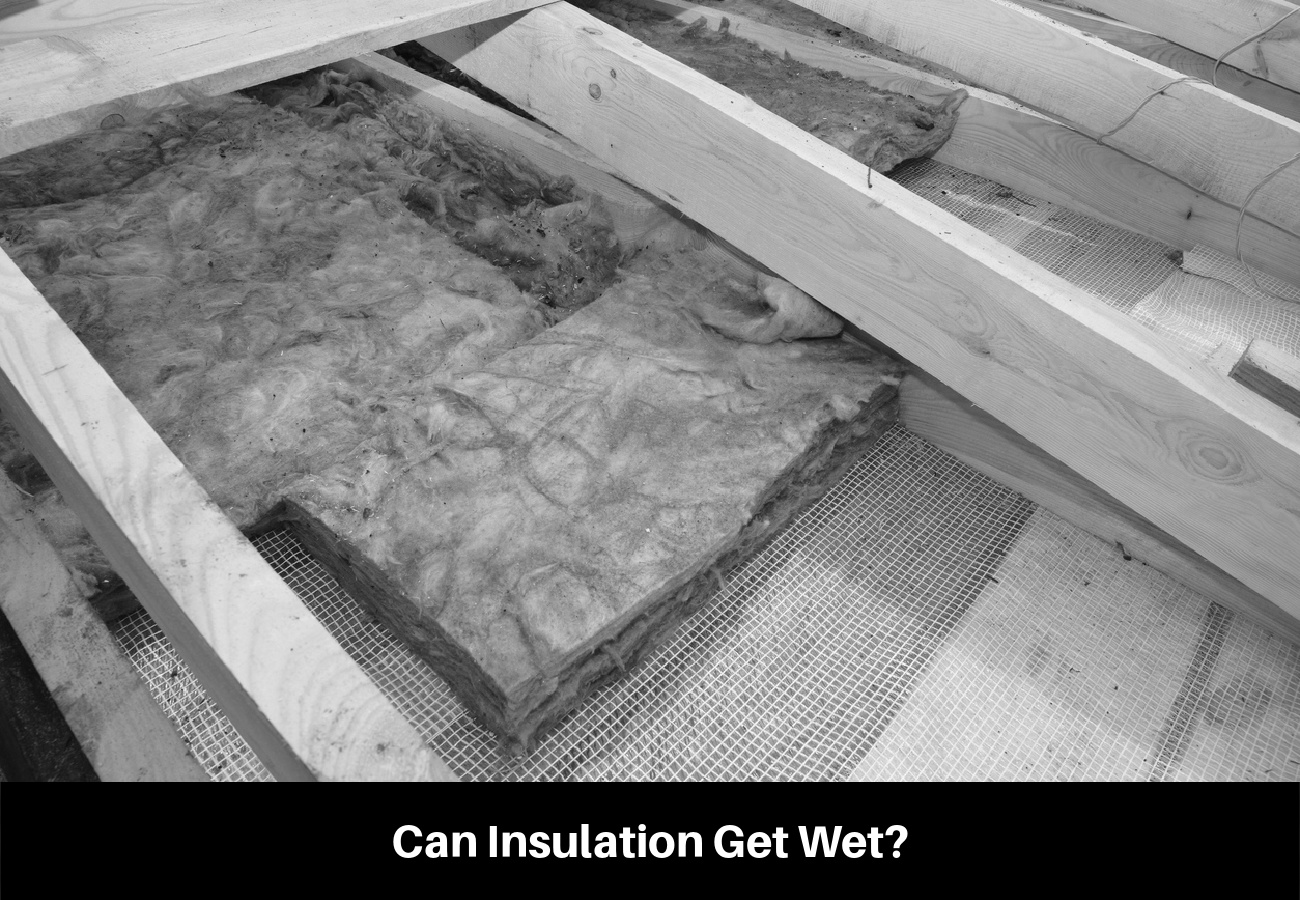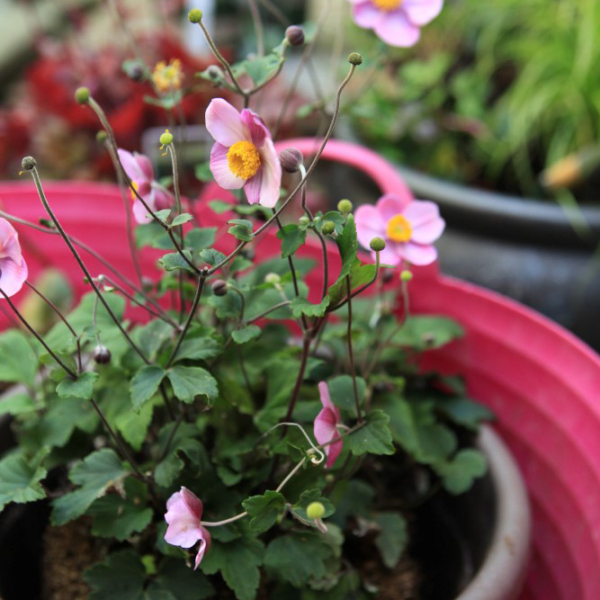Wet insulation is never a good thing. Moisture trapped in insulation can reduce the R-value, damage framing, and provide a home for mold and pests. Most insulation can be dried out and reused. Some resist water. Preventing moisture penetration is important for health, comfort, and cost savings.

How Insulation Gets Wet
Insulation gets wet in many ways. Some are obvious–like storms. Some are less obvious–like condensation.
Building Envelope Leaks
Leaking roofs will eventually soak attic insulation. Cracked stucco and missing siding allow water through walls. Improperly sealed window frames, door frames, and wall penetrations let water into wall cavities. Concrete and concrete blocks leak–if not sealed properly. Some types of insulation absorb and hold the moisture.
Gaps and cracks also allow air infiltration into stud and rafter cavities–from outside and inside. The moist air is trapped in the wall where warm meets cold and condenses.
Condensation
High humidity in the home can cause moisture buildup on or in insulation–especially in houses without vapor barriers. Walls are not immune. Warm wet air rises and can find its way into attics.
Condensation collects on cold plumbing pipes and HVAC ducts. The moisture can then drip onto or soak into the surrounding insulation.
Plumbing Leaks
Plumbing leaks inside walls are rare–but not unheard of. Water can soak into insulation for a long time before the leak becomes apparent. Leaking pipes outside of walls increase humidity in the house.
Lack of Ventilation
Attics and unencapsulated crawl spaces should be well ventilated to remove moisture. Accumulated attic moisture can condense on the underside of the roof deck and drip onto the insulation. Crawl space moisture evaporates into insulation installed on the underside of the floor. Wet insulation in both locations is difficult to dry out.
Weather
Weather is uncontrollable–driving rainstorms, heavy snow, flooding. Insulation is often soaked by weather events and often requires removal and replacement.
Problems Caused By Wet Insulation
Even types of insulation that resist water absorption can turn into a problem when wet. Insulation that absorbs water will have more problems.
- Cost. Reduced insulation value. Higher energy costs. Expensive and time-consuming repairs.
- Air Quality. Mold spores and bacteria can cause lung problems, eye irritation, and more.
- Chemicals. Moisture increases the possibility of formaldehyde and chemical off-gassing.
- Odors. Musty stale smell from mold. Wet fiberglass and wool have distinctive unpleasant smells.
Lower R-value
The insulating component of most insulations is air. Moisture absorbed into the product’s air spaces displaces the air and lowers the R-value because water conducts more heat than air does.
Rotted Framing Members
Adjacent framing members eventually absorb moisture trapped in the insulation. Over time the wet wood will begin to rot. The structural integrity of the building can be compromised.
Mold and Mildew Growth
Mold and mildew need moisture to grow. They can take root in wet insulation. Even rigid foam boards that do not absorb moisture can host mold colonies on the wet surface. Mold can cause health problems and is difficult to remove. The insulation may need to be replaced.
Pest Infestations
Termites and other insects are attracted to wet areas. They will nest in wet insulation. Termites attack wood framing and sheathing. They can destroy a structure in 5 years. Infestations are difficult and expensive to eradicate.
Different Types of Insulation and Water
Water and/or moisture affect different types of insulation in different ways. Some soak it up like a sponge. Some are impervious.
Fiberglass
Wet fiberglass insulation can lose up to 40% of its insulating value. The batts can be removed and dried if they have not been wet for too long. It may be dried with fans. Soaked fiberglass has an R-value of zero. It clumps and sticks to the framing. Disposal is the only option.
Cellulose
Cellulose insulation is made from recycled newspaper–making it very absorbent. Wet cellulose clumps and loses its insulation value quickly. It can be removed, dried out, and re-used–a long process. It is usually better to remove the wet product, fix the leak, and install new cellulose.
Spray Foam
Closed-cell spray foam is moisture resistant once it cures. Water will bead on the surface but will not be absorbed. Mold may grow on the wet surface but will not penetrate the foam. The moisture may still be a problem if it runs off the foam and collects on the wood framing.
Rigid Foam Boards
Like spray foam, rigid foam board insulation is water resistant. Moisture can accumulate on the surface but does not penetrate the product. The moisture can run onto wood and cause rot.
Denim
Denim insulation is 75% recycled cotton. It absorbs as much moisture as possible and will slump in the wall cavity from the weight. Wet cotton insulation (denim) must be replaced. It cannot be dried out and reused but it can be recycled.
Mineral Wool
Mineral wool insulation does not absorb water. It is manufactured from rock and iron slag. Water shed from the batts can accumulate on adjacent framing members. Which may promote rot and mold growth.
How to Detect Wet Insulation
If insulation is wet for long enough the first indication may be the musty stale smell of mold. Mold spores enter the house through any opening and grow in wet locations. It will even grow on drywall that gets wet from condensation in wall cavities.
Black spots or peeling paint on walls and ceilings is another sign of water problems in the insulation. Cold spots on walls can be caused by wet insulation.
Use an infrared thermometer to check for cold spots on walls or ceilings without removing drywall. Significant temperature differences may indicate wet insulation. The cold spots could also be caused by a lack of insulation or gaps and cracks in the exterior finish or sheathing.
Wet insulation enclosed in wall cavities will not dry out. The drywall must be removed to allow air to reach the wet spots. Fans and a dehumidifier speed up the process. Removing the affected insulation can speed up drying time and allow an inspection for the leak and any further damage. Badly compromised insulation will have to be replaced.


